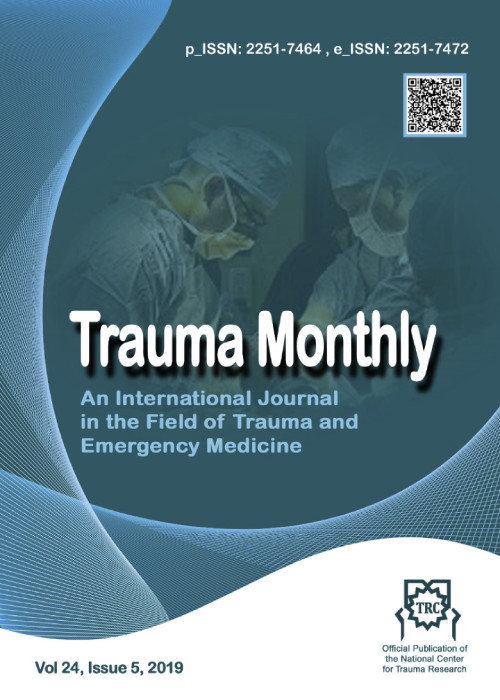A Review of Hospitalization and Clinical Pattern of Occupational Injuries and Related Factors
Occupational injuries are considered as important factors in the loss of active human resources and useful working time; these injuries also constitute an important part of the global burden of disease. However, few studies have been performed on factors influencing the occurrence of occupational injuries. Besides, most studies have focused on the frequency of occupational injuries.
The present study aimed to identify the risk factors associated with mortality, occupational injuries, and length of hospital stay and to recognize the clinical pattern in patients with occupational injuries, depending on the type and severity of injuries with the purpose of designing effective preventive interventions.
This cross-sectional study was conducted on 365 participants in the second half of 2015. The study sample consisted of victims suffering from occupational injuries in Shahid Rajaee Hospital, Shiraz, Iran. The data were collected, using a questionnaire through face-to-face interviews. The injury severity score (ISS), as well as demographic and clinical variables, was evaluated in the subjects. Then, the data were analyzed, using logistic, ordinal, and multinomial regression models.
Out of 365 patients, 34 (9.3%) were female and 331 (90.7%) were male. Additionally, the mean age of the subjects was 34.26 ± 13.63 years. The results showed a significant reverse relationship between mortality and limb injury (P = 0.016) and type of fraction and dislocation (P = 0.02). Also, length of hospital stay had a significant relationship with abdominal injury (P = 0.008) and fraction and dislocation (P < 0.001). ISS within the range of 11 - 26 or≥ 27 was significantly associated with mortality (P < 0.00). Moreover, age ≥ 56 years was directly related to severe abbreviated injury scale (AIS) (P = 0.009). In addition, limb injury had a significant reverse relationship with critical AIS (P = 0.001). Chest (P = 0.013) and limb (P = 0.006) injuries also showed a significant reverse relationship with ISS. Furthermore, abdominal injury was directly related to ISS (P = 0.023), and fracture and dislocation were directly related to AIS (P < 0.001) and ISS (P < 0.001).
By the evaluation of patients’ ISS, fracture, dislocation, abdominal injury, and length of hospital stay, we can identify high-risk groups and develop necessary care and training programs in order to prevent the occurrence of injuries and decrease the length of hospital stay
- حق عضویت دریافتی صرف حمایت از نشریات عضو و نگهداری، تکمیل و توسعه مگیران میشود.
- پرداخت حق اشتراک و دانلود مقالات اجازه بازنشر آن در سایر رسانههای چاپی و دیجیتال را به کاربر نمیدهد.


